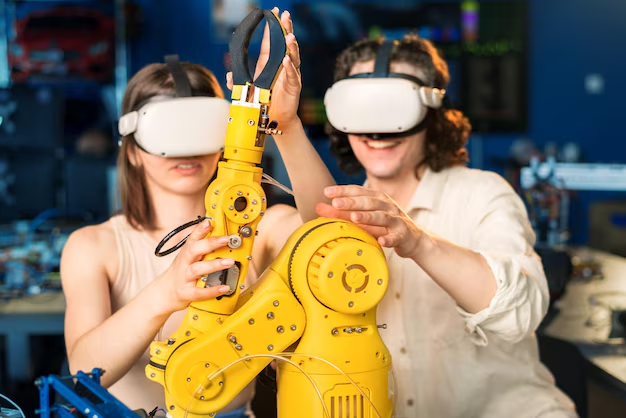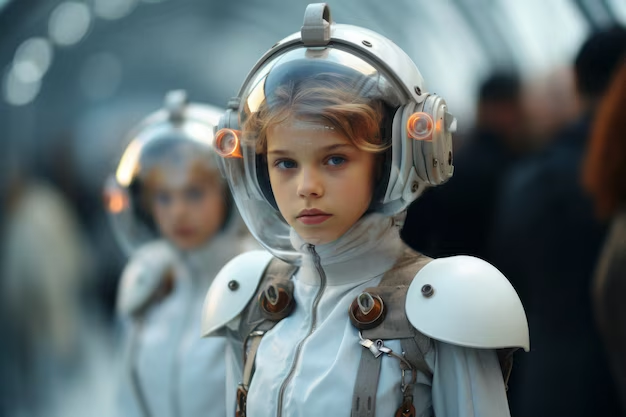The journey of robotics from a concept in science fiction to a transformative technology is a fascinating one. Robotics has gone from being imagined in movies and books to becoming an integral part of modern life, revolutionizing industries, enhancing human capabilities, and even becoming a fixture in homes. This article explores the evolution of robotics, highlighting its milestones, breakthroughs, and its current and future impact on various sectors.
1. The Origins of Robotics: A Sci-Fi Dream
The idea of robots has been around for centuries, but it was popularized in the 20th century by science fiction. Writers such as Isaac Asimov, Karel Čapek, and Philip K. Dick helped create a vision of robots that would assist humans, explore space, and even evolve in ways that could mirror human behavior.
Key Early Influences:
- R.U.R. (Rossum’s Universal Robots) by Karel Čapek (1920): The term “robot” was coined in this play, introducing the concept of artificial, human-like machines.
- Isaac Asimov’s Robot Series: Asimov popularized the idea of robots following the “Three Laws of Robotics,” where robots must assist humans while ensuring safety and ethical standards.
2. The Birth of Industrial Robotics
1940s – 1970s: Early Developments in Robotics
The first steps toward real-world robots began in the mid-20th century with advancements in electronics, mechanics, and computing. In 1956, George Devol and Joseph Engelberger developed Unimate, the world’s first industrial robot. Unimate was installed in General Motors’ factory in 1961 and performed simple repetitive tasks like lifting and welding parts.
Key Milestones:
- 1956: The creation of Unimate.
- 1960s: Early robots were designed for industrial tasks like assembly lines and simple factory work.
- 1973: The first programmable robot, the Shakey, was developed by SRI International and could move and interact with its environment in a limited way.
3. Robotics in the 1980s and 1990s: A Leap Forward

1980s: The Rise of Computer-Controlled Robots
In the 1980s, robots began to evolve with the incorporation of more sophisticated sensors, actuators, and computing technology. The development of robotic arms and robots for specialized tasks such as welding and material handling gained popularity in automotive manufacturing.
1990s: The Introduction of Autonomous Robots
The 1990s marked the rise of autonomous robots that could make decisions based on their environment. Robotics applications expanded beyond factories to include research, healthcare, and even space exploration.
Key Milestones:
- 1981: The introduction of SCARA (Selective Compliance Assembly Robot Arm) for assembly tasks.
- 1997: Deep Blue, IBM’s chess-playing computer, defeated world champion Garry Kasparov, showing that robotics and AI could compete at human-level intelligence.
- 1998: The first robotic rover, Sojourner, landed on Mars as part of NASA’s Mars Pathfinder mission.
4. Modern Robotics: The Integration of AI and Automation
2000s – Present: The Smart and Autonomous Robots Era
As technology advanced, robotics continued to evolve with the integration of artificial intelligence (AI), machine learning, and the Internet of Things (IoT). Modern robots are now smarter, more autonomous, and capable of performing complex tasks.
Key Developments:
- Robotic Arms and Cobots: Collaborative robots (cobots) are designed to work alongside humans in industries like manufacturing, agriculture, and healthcare, assisting with repetitive and dangerous tasks.
- Healthcare Robotics: Robotic surgery and rehabilitation devices, such as the da Vinci Surgical System and exoskeletons, have revolutionized the medical field.
- Autonomous Vehicles: Self-driving cars, drones, and delivery robots represent the cutting-edge of autonomous robotics, with the potential to change transportation and logistics forever.
5. Robotics in Everyday Life
Robots have become much more than factory tools; they are increasingly entering everyday life. From robotic vacuums and AI-powered personal assistants like Siri and Alexa to home healthcare robots, robots are improving convenience and efficiency in various ways.
Examples of Everyday Robotics:
- Robotic Vacuums: Devices like Roomba use sensors and AI to clean homes autonomously.
- Delivery Robots: Companies like Starship Technologies and Nuro are deploying autonomous delivery robots to transport goods in urban areas.
- Robotic Prosthetics: Robotic arms and legs have been developed to help amputees regain mobility and independence.
6. The Future of Robotics: What’s Next?
The evolution of robotics is far from over, with continued advancements in artificial intelligence, quantum computing, and machine learning. The future of robotics looks promising, with the potential to revolutionize sectors such as healthcare, space exploration, agriculture, and even everyday tasks.
Exciting Future Applications:
- Healthcare: Robots will perform more advanced surgeries, assist in diagnostics, and provide personalized care.
- Space Exploration: Robotics will play an essential role in future missions to the Moon, Mars, and beyond, helping humans explore and colonize other planets.
- AI Integration: The next phase of robotics will see robots with advanced AI capabilities that can learn, adapt, and interact with humans more naturally.
7. Challenges and Ethical Considerations
With the rapid evolution of robotics, several challenges and ethical concerns arise. Questions about job displacement, privacy, and the ethical implications of autonomous robots must be addressed as we continue to integrate robotics into society.
Key Issues:
- Job Displacement: As robots take over more jobs, especially in manufacturing, concerns about unemployment and reskilling the workforce arise.
- Privacy and Security: Autonomous robots may collect vast amounts of personal data, raising privacy concerns.
- Ethical Considerations: As robots become more autonomous, determining accountability for actions and decisions made by machines becomes a key issue.
Also Read : Robotics Revolution: How Machines Are Changing The World
8. Conclusion: From Fiction to Reality
The evolution of robotics has been nothing short of remarkable, going from a fantastical idea in science fiction to a driving force that is transforming industries and our daily lives. As robotics technology continues to advance, its potential to revolutionize the world remains limitless. While challenges exist, the continued innovation in robotics will undoubtedly shape the future in unimaginable ways.
SEO Optimized Keywords:
- Evolution of robotics
- From science fiction to reality
- History of robotics
- Robotics technology advancements
- Industrial robots
- Autonomous robots
- AI in robotics
- Robotic arms
- Healthcare robotics
- Robotics in space exploration
- Robotics in everyday life
- Collaborative robots
- Robotic surgery
- Autonomous vehicles
- AI-powered robots
- Robotics in agriculture
- Smart robots
- Future of robotics
- Robotics and artificial intelligence
- Robotics in manufacturing
- Job displacement from robotics
- Robotics and automation
- Ethical issues in robotics
- Robotics and AI integration
- Robotics trends
- Robotics breakthroughs
- Robotics applications
- Science fiction robots
- Robotics in healthcare
- Robotics and the future

